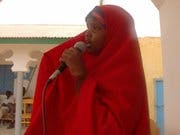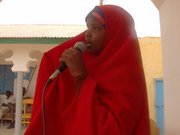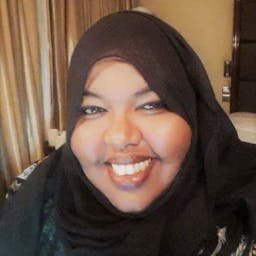A success story from a (post)conflict country: Education in Puntland State of Somalia
Jan 21, 2015
Story


Introduction and background
Since the beginning of 2008 I have been working in the education sector in Puntland, a semi-autonomous region in Somalia. The administrative capital of Puntland is Garowe other major towns include Bossaso, Galkayo, Garowe and Gardho. As someone who strongly believes in the numerous benefits of receiving an education and as a mother, an educationalist and as a Somali, I chose to write on this topic as my feature story and it is my wish that you will enjoy reading it as much as I enjoyed writing it. It is possible for countries that were once in war and conflict to come out of chaos and destruction and be on the road to peace and development again. Indeed it is possible and there are positive stories that can be found in post conflict countries in Africa. It is possible when everyone- men and women, young and old, those living in the country and those abroad (diaspora) government and civilians, the private sector and civil society come together, join forces, pool resources and create partnerships and commitment to rebuild everything from scratch. Yes, it is possible to find a success story even in war-torn Somalia where the entire government machinery had once collapsed and journalists refer to it as a ‘failed state’. The following is the case of Puntland an autonomous region in Somalia which declared itself autonomous in 1998 and with an eventual plan to become part of the federal united Republic of Somalia. Puntland, has been able to transform its education ministry to the extent that International Donor agencies refer to it as a ‘best practice’, or a ‘role model’ that can inspire others and which others could learn much from. This story then in many ways than one highlights the importance of Somali professionals who return home and contribute to the overall development of their country of origin.
Somalia and the civil war
Once conflict has ended in an African state, the need to reconstruct basic education becomes a priority. While post-conflict states share some common issues, they each attempt this reconstruction within a particular context. How can they incorporate different perspectives on issues critical to education reconstruction? Numerous conflicts, several droughts, civil war and associated shifts of population groups particularly displaced persons have afflicted the country and caused disruptions to life, infrastructure and resultant economic hardship. By 1991 when the civil war broke out, the education system in Somalia had already been severely crippled by the internal conflicts that created an increasingly unstable and insecure environment. By 1994, school enrolment had reached its lowest Point, with most if not all schools destroyed, materials unavailable, and teachers and students abandoning the educational process. The current peace has prevailed and has provided opportunities for development including a steady purposeful growth of the education sector. However, a continuing dispute in the regions of Sool and Sanaag caused some difficulties of access for donor activity. On balance the stability that is returning to Puntland and the continuing instability to the south in Somalia has resulted in high numbers of displaced persons to settle in Puntland with consequent strains on the education system. Few people endure as severe a deprivation of human rights as those living in Somalia. Environmental conditions are harsh posing considerable difficulties for the provision of social services. While progress was achieved over the seventies and eighties in the provision of health services and the development of public education, the ensuing period of civil war led to a disruption of normal economic life, the destruction of most public facilities, the disappearance of many professionals, and the collapse of effective government.
New-found stability and security
In recent years, as stability and security has increased in the country, local communities have taken impressive steps to re-build education drawing on the limited resources they have available. And from the late-nineties, the international community has begun to provide limited support to these local initiatives. Over the past four years enrolment rates have increased throughout Somalia. However, the major gains are in the urban areas with a sharp drop-off in educational opportunities in rural areas and especially for the children of nomadic pastoralists. Additionally, due to the recent conflicts there is a lost generation of adolescents who were unable to attend school while they were children yet now seek academic and vocational training in order to improve their prospects for employment. Somalia’s new-found stability has attracted several international bodies including Turkey, Germany, the UK and a few others. Numerous peace conferences have been organised by the international community such as the Garowe Principals, Galkayo Accord, Kampala Agreement and the recent London conference on Somalia. Currently Somali leaders from throughout Somalia are meeting in Istanbul to discuss the country’s future and to tackle national issues such as peace, reconciliation, displacement, piracy and insecurity, among others.
The education system in Puntland
Within the Puntland government, the Ministry of Education is responsible for developing and managing the region's educational needs. It is headed by the Minister Abdi Farah Said, under whom a Vice-Minister and Director General help oversee over 10 departments- formal education and non-formal education as well as technical and vocational training department, among others. The education system of Puntland comprises of two years of early childhood development, eight years of primary education (four years of lower primary and four years of upper primary) and four years of secondary education. Tertiary education comprises an average of four years, with the region currently counting 10 major universities. Development of the education sector in Puntland has incrementally progressed despite periods of civil war and unrest with the last major conflict as recent as 2002. Peace has held in much of Puntland since that time during which many gains in the education sector have been made under conditions for development which are termed as fragile and by world standards an extremely difficult development environment.
Education for All (EFA)
There is currently a renewed focus by major donors on countries coming out of conflict including a focus on countries termed as fragile. The Millennium Development Goals (MDG) and Education for All (EFA) provide tightened mechanisms for countries to progress development through coordinated and regularized framework approaches a more uniform measurable model forming a working partnership between donors and developing countries. Under EFA Goal 2 it is stated that ‘ensuring that by 2015 all children, particularly girls, children in difficult circumstances and those belonging to ethnic minorities, have access to, and complete, free and compulsory primary education of good quality’. Whilst the education sector in Puntland is in a process of growth linked to stabilization and the concerted efforts of donors and development partners some fundamental enhancements to the Ministry of Education’s organization, structure and modus operandi is happening. This is essential if Puntland is to meet alignments and greater conformity associated with donor partnerships and the Puntland Government’s development agenda.
Currently, the education system of Puntland has become stable and it now has a harmonized curriculum, a centralized examination and a sound educational system. There are about 46 secondary schools which are well-equipped and produce very bright students. From 2006/2007 to 2008/2009, there was also a significant increase in the number of schools in Puntland, up 437 institutions from just one year prior. During the same period, the number of classes in the region increased by 504, with 762 more teachers also offering their services. Total student enrolment increased by 27% over the previous year, with girls lagging only slightly behind boys in attendance in most regions. The highest class enrolment was observed in the northernmost Bari region, and the lowest was observed in the under-populated Ayn region. The distribution of classrooms was almost evenly split between urban and rural areas, with marginally more pupils attending and instructors teaching classes in urban areas.
Girls’ education in Puntland
UNICEF primary school surveys for Somalia suggest that compared to boys, girls’ enrolment and retention rates continue to remain low, rarely exceeding 10%. This is attributed to persistent socio-cultural and economic barriers that keep girls out of school generally, but which are more pronounced for girls from disadvantaged and marginalized communities. Although available data are not comprehensive, it is anticipated that a primary school census which will be conducted by the Ministries of Education in September 2011 with UNICEF support and this has contributed to improved data to facilitate more effective education planning in the coming years. However, data obtained from the regions paint a picture of the disparities between girls’ and boys’ school enrolment. It was not possible to obtain data on dropout, retention and transition rates. The data indicate that overall in Puntland, girls comprise 30% of total enrolment in primary, secondary, TVET and non-formal education. However, the problem is not enrolment because the number of girls who enrol is very high in but the problems lay more with retention and completion. From the reports conducted by the EMIS department of the Ministry it is evident that girls have low representation in primary, secondary and TVET at 37%, 29% and 30% respectively compared to boys. It interesting that in the non-formal education (NFE) sector, girls have a higher enrolment of 67% compared to boys’ enrolment of 33%. This is perhaps due to the flexible nature of NFE that is able to accommodate girls’ needs better. Regional disparities in the academic year 2010-2011 indicated by Class 8 enrolment and Form 4 examination registration and 3 further demonstrate the extent to which girls are marginalized (Source: Puntland Education Policy Paper 2011).
Barriers to girls’ education, enrolment, participation and transition
An extensive and empirical national research done by the Gender Unit (see below) on challenges and opportunities faced by girls in the education system in Puntland and in Somalia as a whole, discovered that a combination of factors play a role. The major barriers to female education enrolment and achievement in Somalia were well documented and are as summarized in the list below:
• Household chores that keep girls too busy to attend school
• Lack of interest of some girls in education and shyness, low self-esteem & lack of confidence
• Lack of parental support for girls’ education due to low literacy level of parents as well as lack of understanding of girls’ basic rights & needs
• Shyness and lack of knowledge on maturation & menstruation
• Lack of parental understanding of girls’ needs & rights and lack of female teachers to act as role models
• Lack of role positive models, therefore lack of direction in educational matters and parental discouragement due to lack of value for education
• Lack of single-sex classes/schools
• Embarrassment in front of boys and male teachers and unaffordable school fees and lack of psychosocial support for girls
• Feelings of shame associated with being seen going to the toilet
• Cultural beliefs and practices such as: referential treatment of boys, early marriage, lack of girl-friendly spaces.
• Poverty, lack of gender-sensitive teachers (especially men) as well as displacement due to conflicts
• Male teacher harassment and intimidation
• Marginalized communities such as IDPs, Itinerant/ nomadic lifestyle, slum dwellers
• Lack of curricular subjects and career guidance and counselling to inspire girls to remain and achieve educational goals as well as inadequate sanitation e.g. lack of appropriate toilets at school
Interventions in girls’ education: The Gender Unit of MoE
The Gender Unit of the Ministry of Education in Puntland established the Gender Unit in order to respond to these and work towards the barriers to girl’s education so that more girls can go to school. The Gender unit works to achieve equal education opportunities for girls and boys. Its vision is to be a centre of excellence with information from all parts of Somalia on gender issues as they relate to education among girls and boys. Its mission is to work towards achieving gender equality in education in Puntland and in so doing promote a society where boys and girls thrive as the basis for development of our nation. It uses different strategies to achieve this such as;
• To advocate for girls’ education in Puntland and to ensure that gender perspectives are incorporated in the formulation of policies and plans as well as in the implementation of activities
• To review existing policies and to suggest new legislation that are able to afford better education for the advancement of women, family and the community.
• To undertake research on girls education in order to introduce innovative approaches in the planning and implementation of education programmes.
• To establish a gender working group and coordinate and chair all gender in education projects and activities in Puntland.
• To develop and strengthen a comprehensive and integrated database for the purpose of planning, monitoring and evaluation of girls education in Puntland.
• To increase the level of skills and knowledge as well as to empower girls and women to enable their effective participation in nation building through education.
• To strengthen networking at the national and international levels and facilitate sharing of information, experience and expertise on gender in education.
• To increase access to information and communication technology (ICT) for women, families and community.
Over the past 2 years, the Gender Unit of the Puntland Ministry of Education has conducted research and assessment studies on girls participation in the education sector in Puntland, it has conducted social mobilisation and media campaigns, it has distributed scholarships to 186 needy girls from very poor families and ethnic minorities, it has also conducted research on the challenges faced by female teachers in the school environment, it has mainstreamed gender into the education policies and it regularly conducts capacity building to education staff members in the capital as well as in the regions on gender issues.
Resources
1. VOF Assignmnet 5 http://www.worldpulse.com/node/52307
2. VOF Asignment 3 http://www.worldpulse.com/node/49414
3. The success of the education system in Puntland http://www.youtube.com/watch?v=_dyA4MYD_TY
Websites
1. MoE Puntland website; www.moepuntland.com




